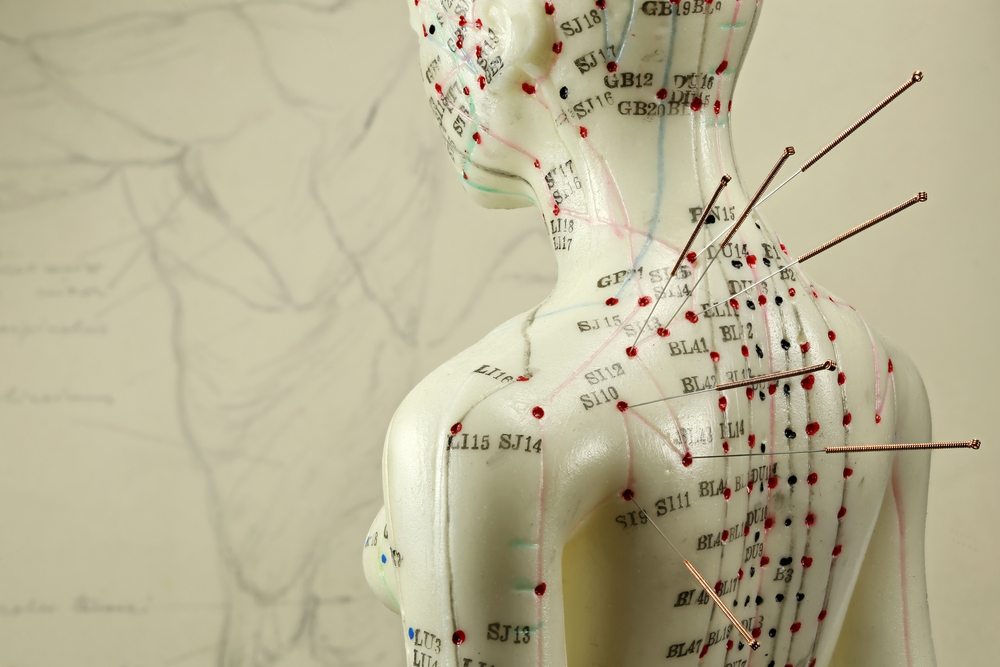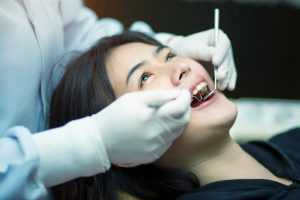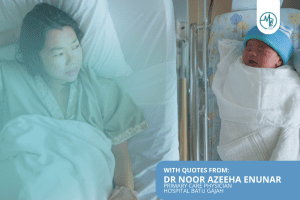Acupuncture, a traditional Chinese medicine technique, has garnered significant attention in modern healthcare settings. This ancient practice, involving the insertion of needles at specific body points, is believed to balance the body’s energy flow or Qi.
Historical Perspective and Current Relevance
Acupuncture, a key component of traditional Chinese medicine, boasts a rich history spanning thousands of years. It is deeply rooted in ancient Chinese philosophy and concepts of health and disease. Moreover, acupuncture’s origins are believed to trace back to China before 2500 BCE. This practice emerged from the dualistic cosmic theory of yin (representing the female, passive, dark, and earth) and yang (representing the male, active, light, and heaven) within ancient Chinese philosophy.
Furthermore, this ancient healing art gained prominence over the centuries and became one of the standard therapies in China. It was complemented by other modalities such as massage, dietary interventions, herbal remedies, and heat therapy, known as moxibustion. Notably, during the Ming dynasty (1368–1644), a significant milestone was reached with the publication of “The Great Compendium of Acupuncture and Moxibustion.” This comprehensive work detailed 365 points for needle insertion, further enriching the practice. To aid in teaching and examination, bronze statues depicting acupuncture points were crafted during the fifteenth century.
Spread and Modern Acceptance
Global Spread: The practice spread to other countries like Korea and Japan by the 6th century. In the 17th century, European physician Ten Rhijne, working for the East India Company, described the practice medically. The first half of the 19th century saw a growing interest in acupuncture in America and Britain.
Revival and Research: In the 1950s, China established acupuncture research institutes, expanding its availability. In 1971, a US press corps member reported successful acupuncture treatment in China, sparking international attention. Subsequent positive evaluations by institutions like the NIH led to its acceptance in the USA and other Western countries.
Effectiveness of Acupuncture for Chronic Pain
In recent years, healthcare professionals have increasingly recognised acupuncture’s role in pain management, particularly for chronic conditions. A comprehensive understanding of its efficacy and application is essential, especially as a non-opioid therapy option for treating chronic pain conditions.
Meta-Analysis of Chronic Pain Conditions
An individual patient data meta-analysis updated to include randomised trials up until December 2015 showed that acupuncture is effective for chronic pain. The analysis included trials focusing on non-specific musculoskeletal pain, osteoarthritis, chronic headache, and shoulder pain, encompassing data from 20,827 patients from 39 trials.
Results indicated that acupuncture was superior to both sham acupuncture and no acupuncture controls for each pain condition. The effects of acupuncture persisted over time, with only a small decrease (approximately 15%) in treatment effect at one year. This study highlighted that the therapeutic effects of acupuncture for chronic pain are substantial and enduring, not solely attributable to placebo effects.
Recent Findings and Recommendations
Recent evidence strongly supports the recommendation of acupuncture for managing various chronic pain conditions. These conditions encompass chronic low back, neck, shoulder, and knee pain, as well as headaches. The integration of acupuncture into pain medicine practices and training programs is on the rise, signifying its growing acceptance within mainstream medicine. It is widely recognised as an effective, safe, and cost-effective treatment option, and healthcare professionals perform it with confidence.
Ongoing research is actively exploring acupuncture’s potential as an adjunct or alternative to opioid therapies, especially in perioperative settings. Notably, its mechanisms of action involve multiple physiological processes, including the activation of specific cation channels, the suppression of microglial activity, and the regulation of inflammatory factors.
Variability in Therapeutic Effects
In a publication on acupuncture for pain management, it is noted that the therapy is well-tolerated and carries little risk of serious adverse effects. Both traditional acupuncture and non-traditional techniques like electro acupuncture and dry needling often lead to reported pain improvement. However, the therapeutic effects of acupuncture can vary due to several factors. These factors include the needling technique, the number of needles used, the duration of needle retention, the specificity of acupuncture points, the number of treatments, and psychological factors.
While acupuncture offers modest benefits in addressing chronic low back pain, tension headaches, and migraine prophylaxis, its superiority over sham acupuncture is not consistently clinically significant. This suggests a notable placebo response in some cases. Nevertheless, acupuncture remains a reasonable treatment option, especially for patients who are unresponsive or intolerant to standard therapies.
Acupuncture in Treating Depression and Anxiety
A 2013 study in the ‘Journal of Alternative and Complementary Medicine’ reviewed the effectiveness of acupuncture in treating anxiety and depression in women. This review included randomised controlled trials comparing acupuncture with various control procedures in subjects with anxiety and/or depression. The results from six studies showed significant differences between acupuncture and control groups, providing high-level evidence supporting the use of acupuncture in treating major depressive disorder, especially during pregnancy.
A systematic review focused on the effectiveness of acupuncture and electro acupuncture for anxiety disorders. This review assessed published clinical trials (controlled, randomised, and non-randomised) where anxiety was the primary therapeutic target.
After reviewing 1135 papers, researchers identified 13 papers meeting inclusion criteria. The review concluded that acupuncture therapy for anxiety disorders has good scientific evidence, providing effective outcomes with fewer side effects than conventional treatments. However, more research is needed to reinforce these findings.
Other therapeutic uses of acupuncture
Acupuncture’s application spans a diverse range of conditions, often with varying results.
- Infertility treatment
- Weight loss
- Allergy relief
- Asthma management
- Chronic fatigue syndrome
- Digestive disorders
- Migraine and headache relief
- Menopausal symptoms
Challenges and Criticisms
Acupuncture has emerged as a valuable tool in the arsenal of treatments for chronic pain. Despite initial scepticism rooted in its traditional origins, ongoing research has shed light on its mechanisms and efficacy. Its ability to provide relief that transcends placebo effects, coupled with the pressing need to reduce reliance on opioid therapies, highlights acupuncture’s importance in pain management strategies.
As it continues to find its place within mainstream medical practices and scientists delve deeper into its applications, acupuncture stands as a versatile and effective modality for addressing a wide range of chronic pain conditions.
Its enduring value is a testament to its journey from ancient tradition to modern medicine, and one should not underestimate its potential to enhance the quality of life for countless individuals.
Disclaimer: The information provided in this article is for educational purposes only, and should not be considered medical advice. Please consult with a healthcare professional for more personalised guidance and various treatment options that may be available to you.
References
- Acupuncture for Pain. (2019, July 15). PubMed. https://pubmed.ncbi.nlm.nih.gov/31305037/
- Yin, C. S., Buchheit, T. E., & Park, J. J. (2017, October 1). Acupuncture for chronic pain. Current Opinion in Anesthesiology; Lippincott Williams & Wilkins. https://doi.org/10.1097/aco.0000000000000501
- Vickers, A. J., Vertosick, E., Lewith, G., MacPherson, H., Foster, N. E., Sherman, K. J., Irnich, D., Witt, C. M., & Linde, K. (2018, May 1). Acupuncture for Chronic Pain: Update of an Individual Patient Data Meta-Analysis. The Journal of Pain; Elsevier BV. https://doi.org/10.1016/j.jpain.2017.11.005
- Acupuncture | Definition, History, Benefits, & Facts. (2023, October 17). Encyclopedia Britannica. https://www.britannica.com/science/acupuncture
- Amorim, D., Amado, J., Da Silva Brito, I., Fiuza, S. M., Amorim, N., Costeira, C., & Machado, J. (2018, May 1). Acupuncture and electroacupuncture for anxiety disorders: A systematic review of the clinical research. Complementary Therapies in Clinical Practice; Elsevier BV. https://doi.org/10.1016/j.ctcp.2018.01.008
- Armour, M., Smith, C., Wang, L., Naidoo, D., Yang, G., MacPherson, H., Lee, M. S., & Hay, P. (2019, July 31). Acupuncture for Depression: A Systematic Review and Meta-Analysis. Journal of Clinical Medicine; Multidisciplinary Digital Publishing Institute. https://doi.org/10.3390/jcm8081140
- Sniezek, D. P., & Siddiqui, I. (2013, June 1). Acupuncture for Treating Anxiety and Depression in Women: A Clinical Systematic Review. Medical Acupuncture; Mary Ann Liebert, Inc. https://doi.org/10.1089/acu.2012.0900
- Acupuncture. (2023, July 12). National Cancer Institute. https://www.cancer.gov/about-cancer/treatment/cam/patient/acupuncture-pdq
- Li, Q., Yu, M., Wang, X., Yang, G., Wang, H., Zhang, C., Xue, N., Xu, W., Zhang, Y., Peng, C., Yang, L., Fu, Q., & Yang, Z. (2020, June 3). Efficacy of acupuncture in the prevention and treatment of chemotherapy-induced nausea and vomiting in patients with advanced cancer: a multi-center, single-blind, randomized, sham-controlled clinical research. Chinese Medicine; BioMed Central. https://doi.org/10.1186/s13020-020-00333-x













